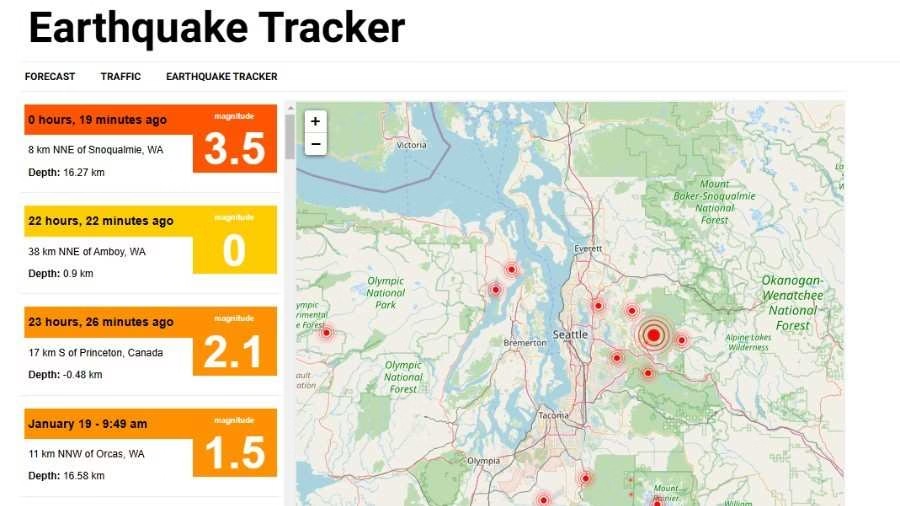
Snoqualmie Earthquake Strikes Washington on January 20, 2025
A Snoqualmie earthquake with a magnitude of 3.5 struck near Snoqualmie, Washington, on January 20, 2025, at 1:35 PM PST. The epicenter was located about five miles from Snoqualmie, at a depth of 10.1 miles (16.3 kilometers). The shockwave was felt widely, impacting 78 different ZIP codes, including cities like Seattle and Olympia, along with more remote areas like the Olympic Peninsula and Whidbey Island. This significant tremor prompted over 900 responses to the US Geological Survey (USGS) about its impact, confirming widespread shaking across the region. A smaller magnitude 2.0 quake occurred near Fall City just before the main event, adding to the shocking seismic activity in the area.
Despite the strong shaking, there were no immediate reports of injuries or significant damage. However, the event has reignited discussions about the region’s earthquake preparedness and the potential for stronger seismic activity in the future.
Snoqualmie Earthquake: A History of Seismic Activity
The Snoqualmie area has a history of seismic events due to several fault lines converging beneath the region. In 2009, a magnitude 2.9 earthquake was recorded near Snoqualmie, and a notable earthquake swarm occurred in 1932, including a magnitude 5.7 quake. The largest historical earthquake in Washington occurred in 1872 with an estimated magnitude of 6.5 to 7.0. These past events emphasize the ongoing seismic risk in the region.
The Snoqualmie Valley lies within the Cascadia subduction zone, which is capable of producing large earthquakes. While smaller tremors like the recent 3.5 earthquake are common, scientists warn that more powerful earthquakes could occur in the future.
Reactions to the Snoqualmie Earthquake
The Snoqualmie earthquake caused varied reactions across nearby cities like Seattle and Olympia. In Seattle, the shaking was intense, especially in taller buildings, leading to mass evacuations and a spike in concern about infrastructure safety. Emergency services were immediately deployed, but there was no significant damage or injuries reported.
Meanwhile, in Olympia, people remained calm, relying on earthquake drills they had practiced. Many residents took cover under desks or tables, following safety protocols learned from previous drills. Community members in both cities gathered outside after the quake, checking on neighbors and discussing the event.
Snoqualmie Earthquake: Safety Tips and Precautions
If you were affected by the Snoqualmie earthquake, it’s crucial to stay safe in the aftermath. Here are some essential steps to follow:
- Check for Injuries: Ensure that you and others around you are safe. Provide first aid or seek medical help for serious injuries.
- Inspect Your Home: Look for any visible damage, such as cracks in walls or ceilings. If the damage appears significant, do not re-enter your home.
- Check Utilities: Inspect gas, water, and electrical lines for damage. If you detect a gas leak, open windows and evacuate the building immediately.
- Expect Aftershocks: Be prepared for aftershocks, which can occur shortly after the main earthquake or even days later.
- Stay Informed: Listen to updates from local authorities via a battery-operated radio or reliable news sources. Limit phone usage to emergencies to keep the lines open.
By following these precautions, you can ensure your safety and help others in your community recover from the shock of the Snoqualmie earthquake.
Related post : Seismic Activity Monitoring in the Cascade Volcanoes: Technology and Insights
